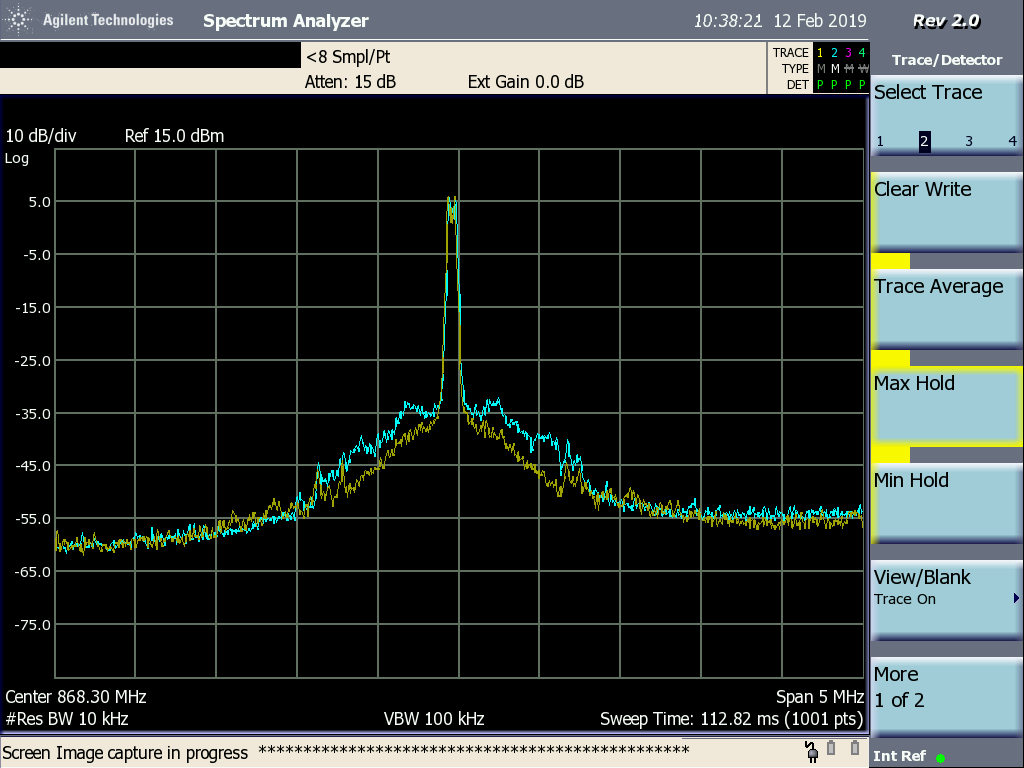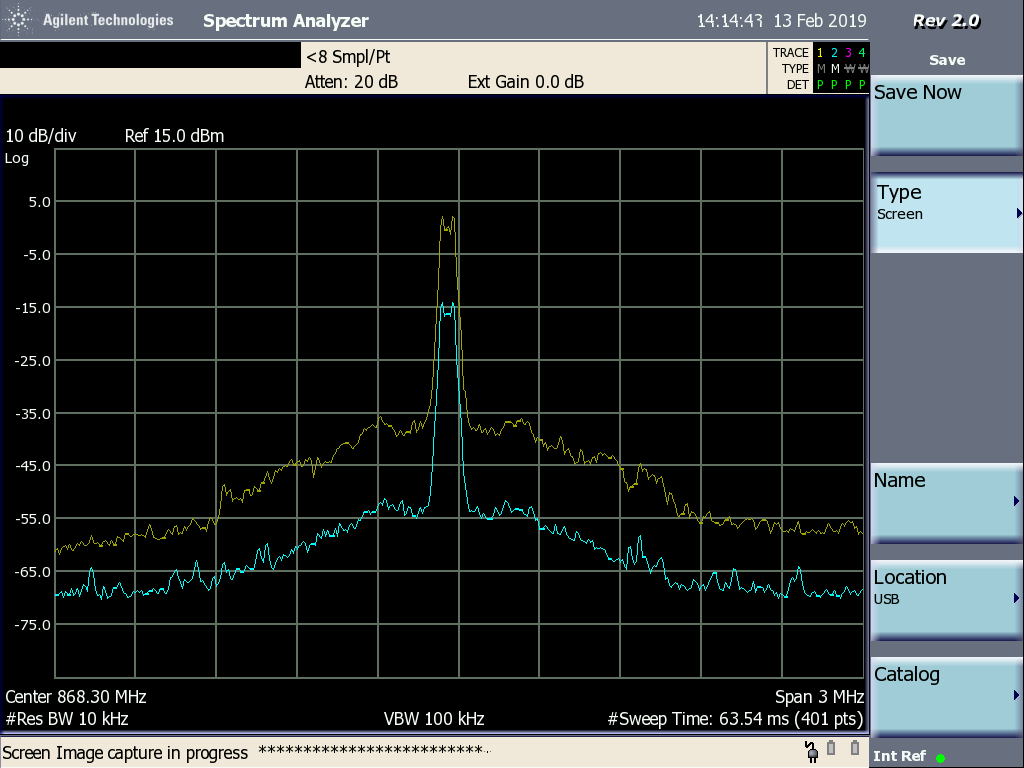Other Parts Discussed in Thread: CC1190
Team,
we did RF measurements on one of our product based on CC430F and we noticed unexpected spurious emissions near the carrier frequency.
We did some experiments to investigate what is causing the unwanted emissions and we are not able to find the exact answer. We have the same PCBs with the same SW programmed but some of them have "good" spurious and some of them have spurious too high - see attached print screen of the measurement of spurious emissions near the carrier frequency.
The yellow trace is "good" and the blue is "bad".
We can share schematics and PCB layout offline if helpful.
Do you have any advise what part of HW could cause above mentioned spurious increase (perhaps xtal)?
The crystal frequency is 27,0 MHz. We would like to operate at 2 frequencies: 869,52 MHz and 868,3 MHz.
Thanks for your help
TI Customer



